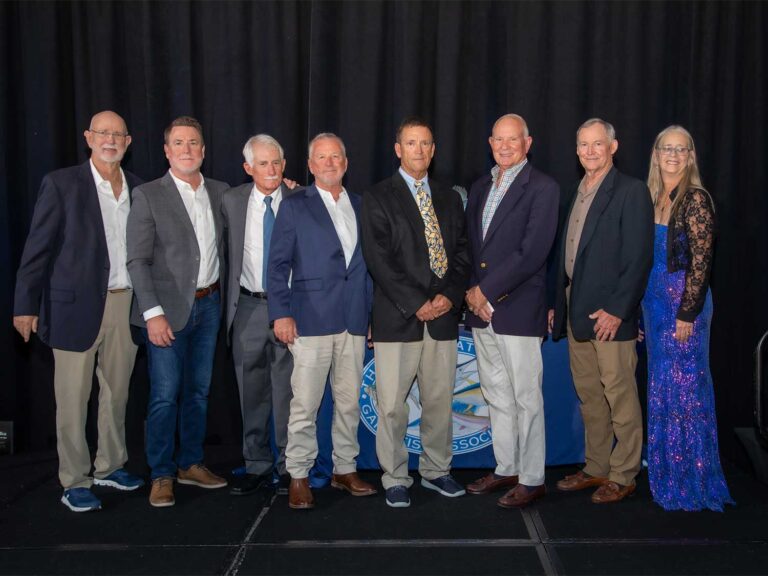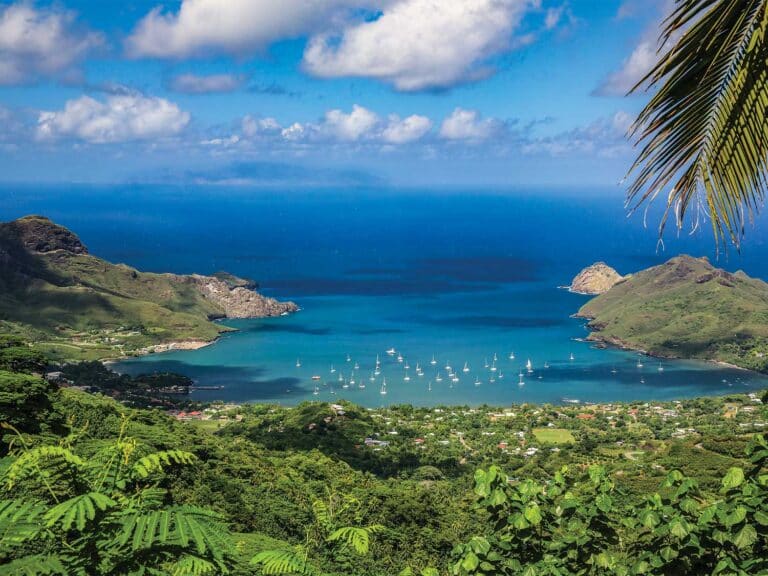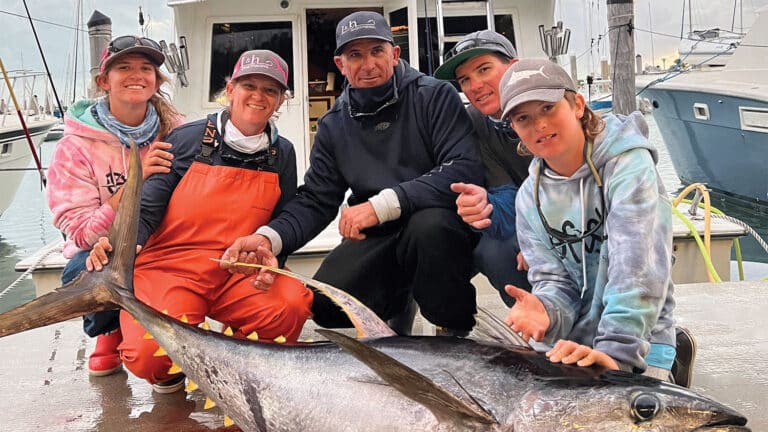
Special delivery: Sign up for the free Marlin email newsletter. Subscribe to Marlin magazine and get a year of highly collectible, keepsake editions – plus access to the digital edition and archives.
Whether painting a sandy shoreline in splashes of turquoise or connoting the plaintive croons of a musician, shades of blue tinge the spectrum of our lives. The Dominican Republic seems to have been built upon the color, with its navy-accented flag, nearly neon Caribbean coastline and Larimar—a gemstone found nowhere else in the world. And yet these signature hues still pale in comparison to the best blues the country has to offer: its marlin.
The DR is part of the Caribbean’s Greater Antilles and shares the island of Hispaniola with Haiti. Known for producing stellar blue marlin, white marlin and sailfish numbers depending on the moon, time of year and location, the country boasts some of the best bluewater fishing in the world. It also offers luxurious and safe marinas for boats and their crews.
On my recent trip to the country, I not only visited two of the nation’s most popular marinas and tournament venues, but also explored other cities along the coast. With Juan Luis Guerra’s upbeat merengue on the radio, I rode around the country with a guide, learning about the DR’s rich history and colorful culture. First, we headed to Marina Cap Cana.
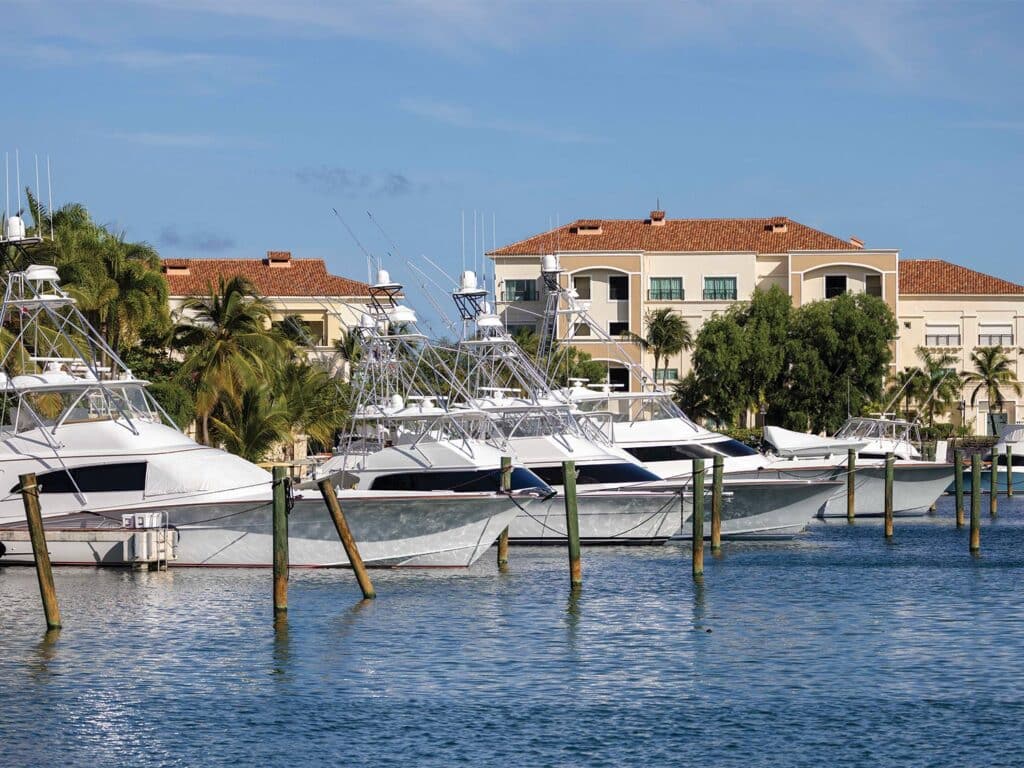
Fishing at Marina Cap Cana
Cap Cana is best described as a tourist and real estate enclave. Just 20 minutes from the international airport in Punta Cana, Cap Cana’s gated property stretches across 30,000 acres along the eastern shore of the DR. Although world-class hotels, condos, restaurants, golf courses, polo fields, and spas have already been established, over 70 percent of the land has yet to be developed. It’s an astounding property regularly under construction with new growth.
Cap Cana’s state-of-the-art marina is equally impressive. Surrounded by condos and restaurants designed with Mediterranean architectural influences, the marina can host up to 150 boats.
The bluewater bite off Cap Cana changes throughout the year. White marlin are expected from March through June, with peak numbers in April and May. Blue marlin are available May through October, but peak season occurs June through September. In the fall and early winter, sailfish, wahoo and tuna also come through the area. Mahi are available throughout the year.
When we left Marina Cap Cana aboard Tease Me, a 42-foot Ocean, we chugged away from port amid unusually calm seas. The Atlantic Ocean and Caribbean Sea meet off the DR, so conditions are often disorganized and rough. Capt. Carlos “Mello” Alberto and mates Carlos “Chichi” Ramirez and Juan Antonio Zorrilla set out lines early so we could fish our way to the FADs, or fish aggregating devices, that are located roughly 27 miles from shore.
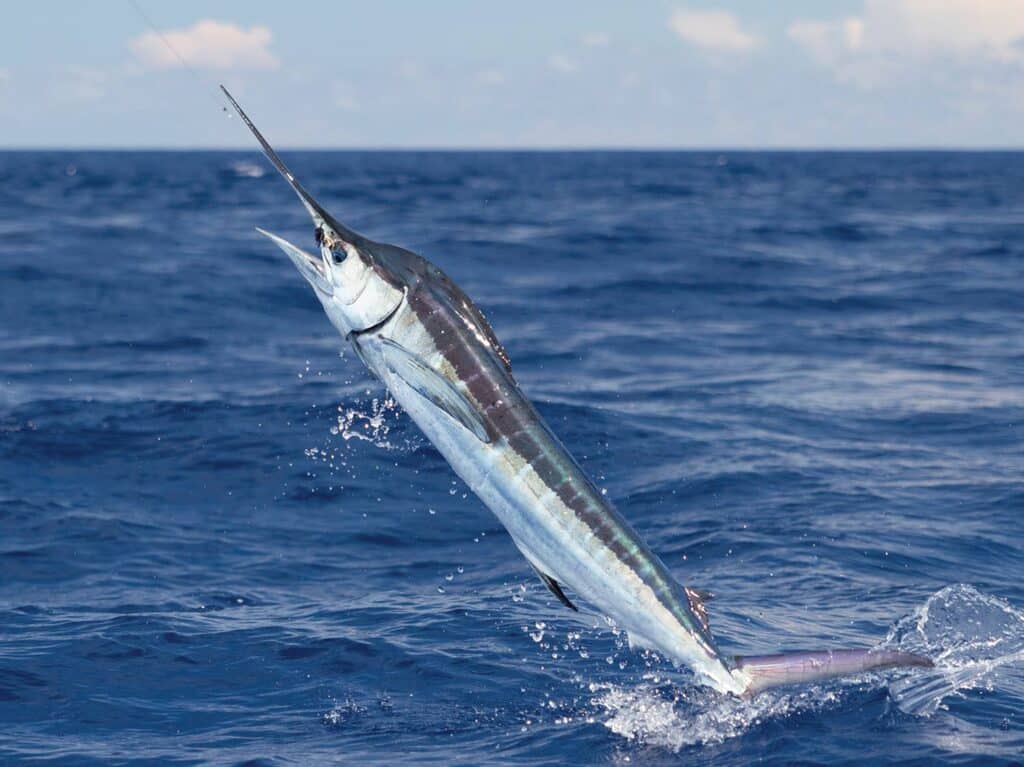
The water was beautiful and clean with plenty of bait. After a large ship crossed our bow, Alberto excitedly shouted down to the cockpit as a sleek billfish launched into the air and danced across the distant mountains. Ramirez got the fish to the boat in minutes. It was no blue but was instead a nice white marlin.
Prudencio Ferdinand, my guide throughout my trip, had never seen a marlin before, so we celebrated accordingly. We didn’t get our blue, but we caught the next-best thing!
After we returned to port, Ferdinand and I went back to the Margaritaville Island Reserve Resort Cap Cana. I’d never stayed in one of Jimmy Buffett’s hotels, and my villa, with its teal accents and pool access, proved the perfect place to catch up on rest. Best of all, it had two showers. I preferred the outdoor shower, complete with a bright-orange lounge and a garden of leafy plants. It was my own little rainforest in Margaritaville.
One of the nights we stayed in Cap Cana, Ferdinand and I shared a meal with Silvano Suazo—the marina’s director—at the newly opened Noah restaurant. The menu features a selection of pastas, steaks and seafood dishes with Italian and Dominican influences. Overlooking the marina’s canals, we shared a bevy of bites, including octopus, mahi crudo and my favorite dish of the night, mofongito with ropa vieja. I went to bed content from the meal, the wine and the company.
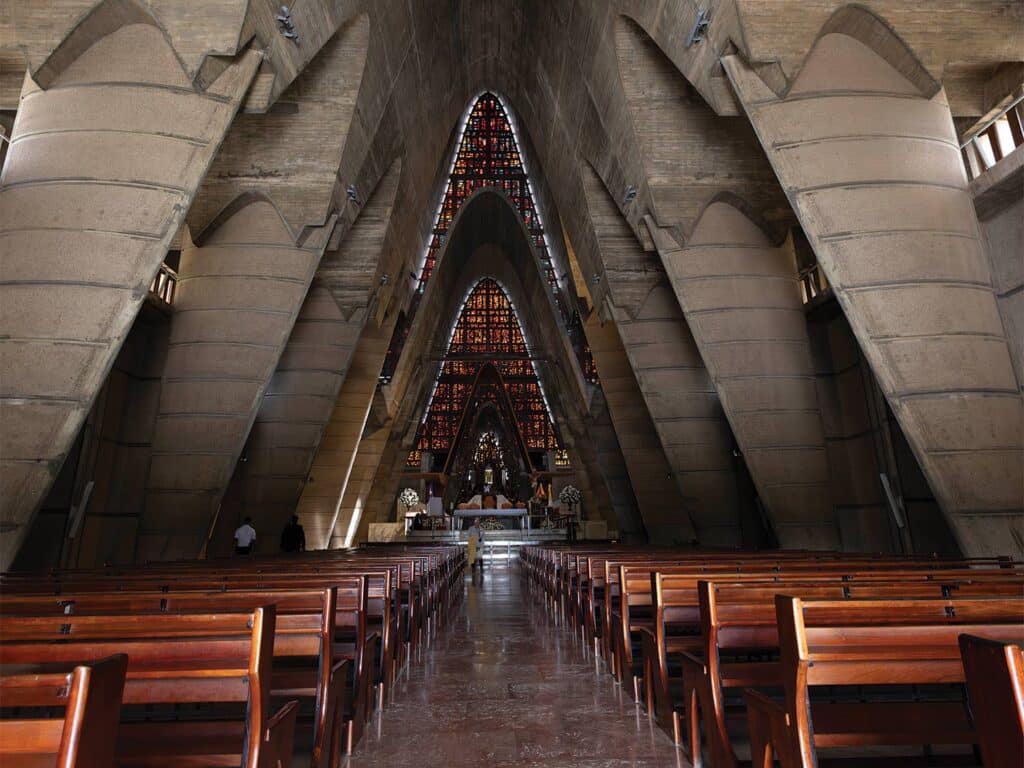
A Tour of History and Culture
We next set out south for Santo Domingo, with a few other stops in between. Passing bright-green fields of tall sugar cane with a backdrop of towering mountains, we traveled to the city of Higuey to visit the public market and the Basilica-Cathedral of Our Lady of Altagracia.
The city’s streets were busy with motorbikes and taxis as we walked into the market and its corridors stocked full of vendors selling vegetables, fruits, spices, poultry and meats.
The cathedral was an entirely different experience. Quietly, Ferdinand walked me through the astonishing structure, which features tall parabolic arches and unique stained glass. Built in 1971 by French architects, the Basilica is one of the DR’s most important religious sites.
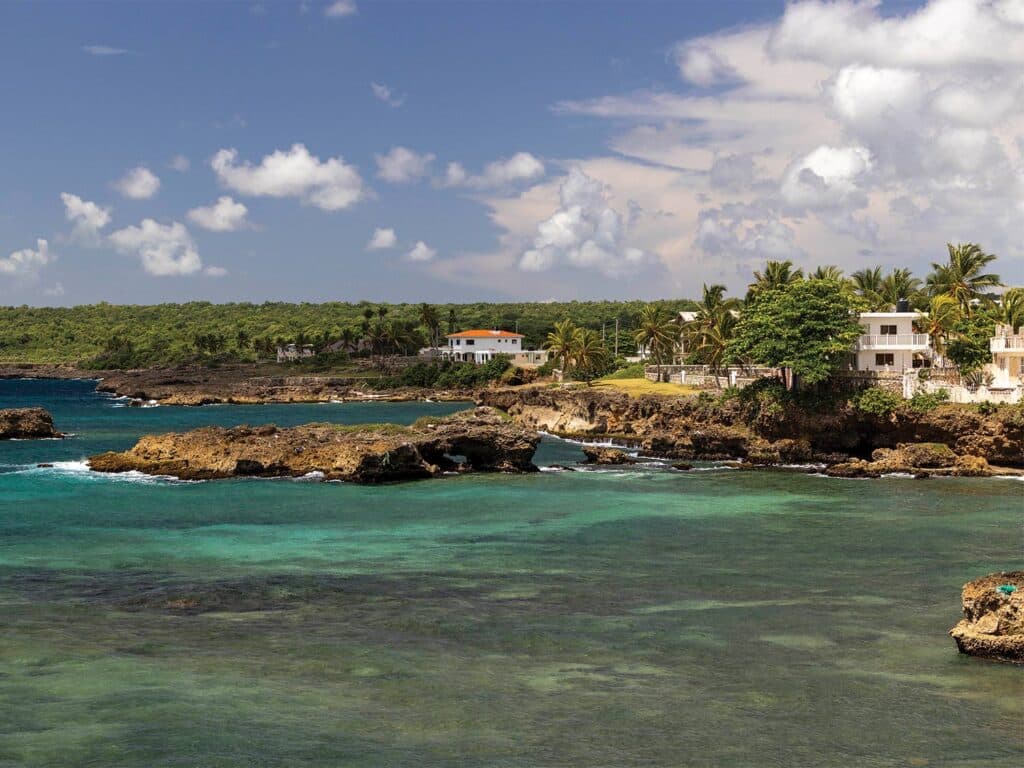
Next, we drove to Boca de Yuma, a small fishing village overlooking the confluence of the Yuma River and the Caribbean Sea. As we drove through the town with its pastel-colored homes, stone walls and working pangas, men and women stood in the roadway, holding fresh fish and lobsters in their hands. We ate lunch at Doña Carmen’s Restaurant, where Ferdinand hand-selected the red snapper before it was fried whole and served with salad and tostones. It was one of the best meals of the trip.
We then had a two-hour drive to Santo Domingo, the nation’s capital. In 1493, Christopher Columbus established the first official settlement in the Americas along the shores of the DR, so Spanish and other colonial influences are found throughout the city.
I didn’t make it to the more modern section of Santo Domingo, but I thoroughly enjoyed my time in the historic district of the city. It’s a romantic part of town, with colorful colonial homes lining streets lit aglow by lanterns flanked in ironwork.
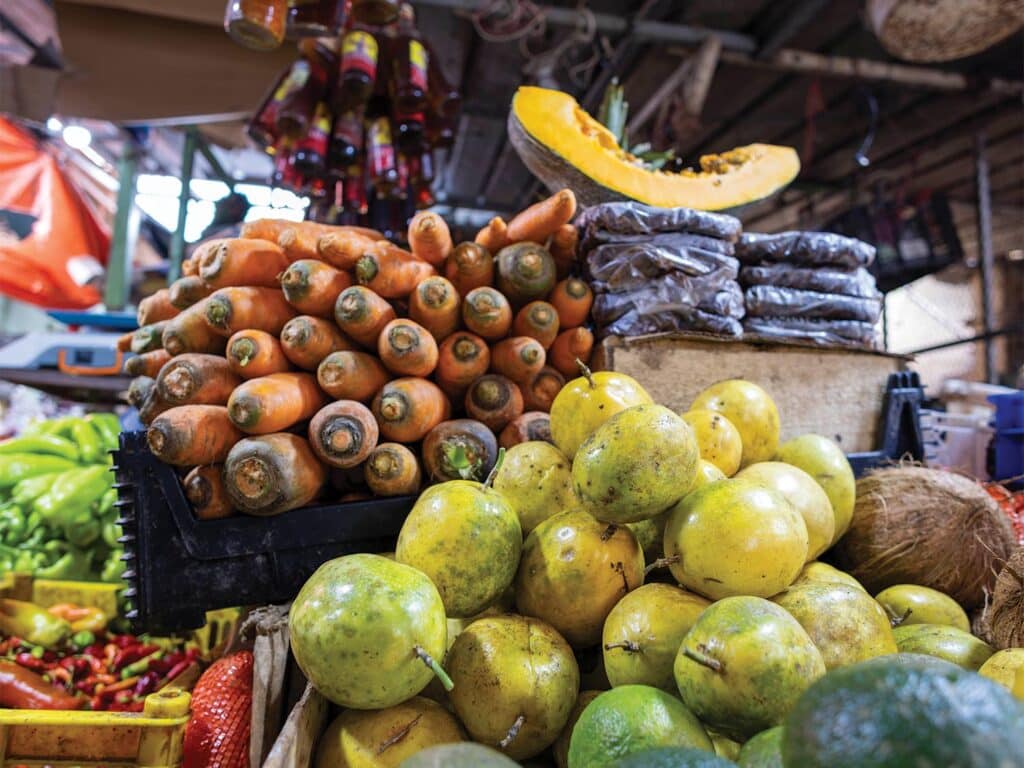
That evening, I met two of Ferdinand’s colleagues for dinner at the Kimpton Las Mercedes, one of the newest boutique hotels in the colonial district. The floors of the hotel wrap around a little rainforest, tastefully incorporating the hotel’s commitment to environmentally sustainable practices. Appropriately, it started to drizzle as we walked up the stairs through the cascading trees. We tasted two stunning cocktails and enjoyed a nice Italian dinner at the hotel’s restaurant.
Afterward, I returned to my own impossibly quaint hotel, Casa Antillana, one of several colonial homes that make up the boutique hotel Casas del XVI, or Houses of the 16th Century. Retaining some of their original designs while incorporating modern luxuries, these houses have been converted into unique boutique hotels with a B&B flair.
Ferdinand picked me up the next morning so we could explore the colonial city, starting with Museo de las Atarazanas Reales, a museum that features artifacts from European shipwrecks along the coast. Jewels, pottery, cookware, and of course silver and gold stud the displays. The museum is a must-see for those visiting Santo Domingo. Not only is it one of my favorite experiences from the country, but it’s also one of the best museums I’ve ever visited.
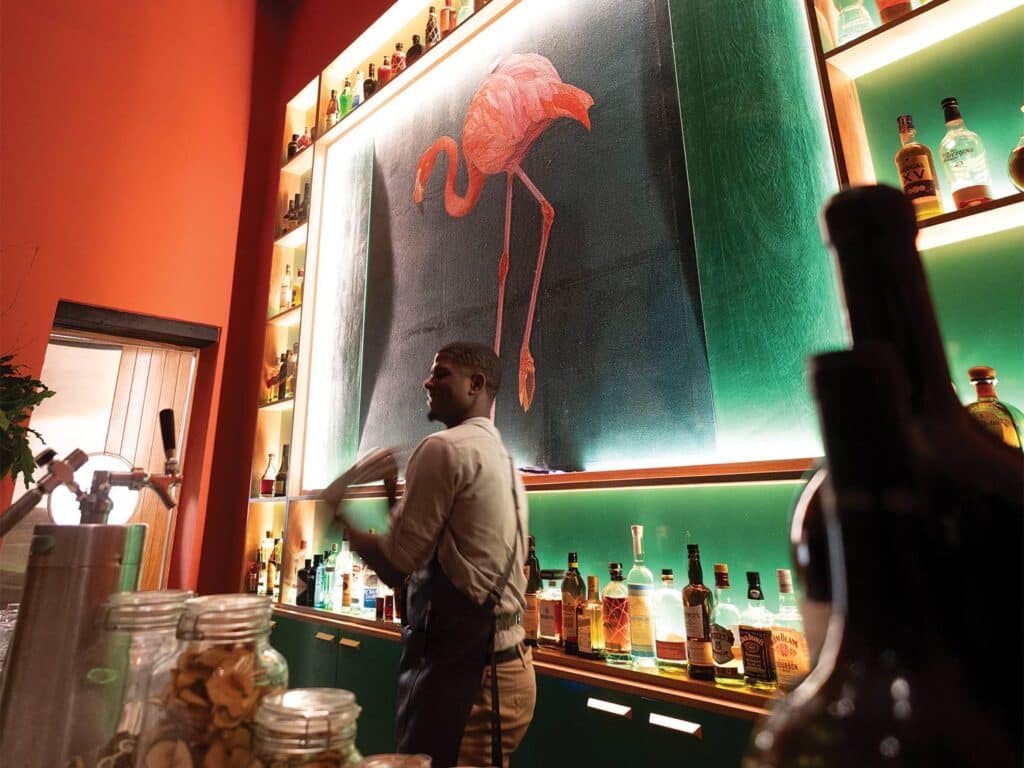
Later, we walked the streets of the colonial city, passing a palace once inhabited by Columbus’ family and other historic sites. We stopped to see how locals hand-roll cigars, popped in at Kahkow for a touristy chocolate experience, and enjoyed croquettes, mofongo and sancocho, a hearty Dominican soup, for lunch.
A Final Night in Casa de Campo
We then left Santo Domingo for the last stop of our trip, Casa de Campo. Similar to Cap Cana, Casa de Campo is a meticulously manicured resort and real estate enclave with a high-end marina. Professional baseball players and celebrities find sanctuary behind the property’s guarded gates. A luxury hotel and spa and several world-famous golf courses draw in visitors from around the globe.
Casa de Campo’s top-notch marina has its own movie theater, boutiques, apartments, restaurants and pharmacy. The destination attracts boats for an early spring blue marlin bite. Sailfish arrive in January and February, but the big draw comes later. Blue marlin show up in droves beginning in February, and the season typically runs through April.
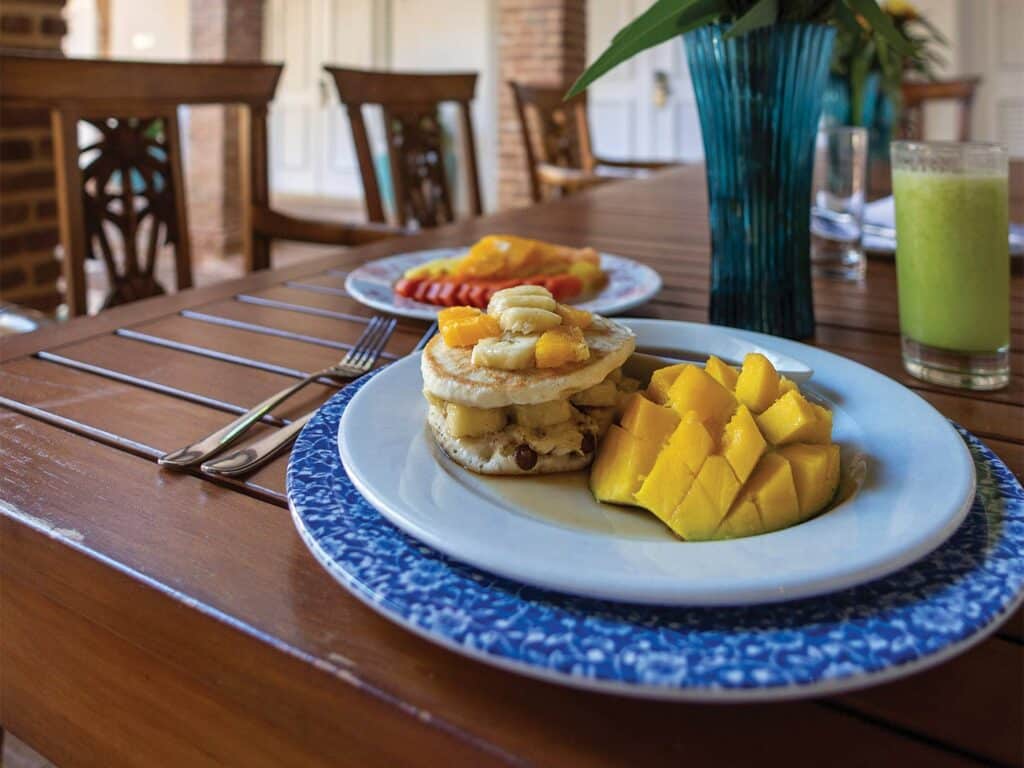
That night, I ate dinner with Josie Gonzalvo, the marina’s director, and his wife, Vilma Nuñez, the marina’s marketing manager. We dined at Shibuya, and they warned me that the portions were colossal. I dove right in, thinking my appetite could handle the meal ahead. I tapped out a quarter of the way through my crispy fried rice after some tasty appetizers.
Read Next: Marlin Fishing in the Dominican Republic.
My time in the DR was unlike anything I expected. Before experiencing it firsthand, I could only envision the country’s all-inclusive resorts. While those destinations have their perks, I’ve come to appreciate the DR’s diversity as well as its rich history and unique culture.
Dominicans often refer to their homeland as Quisqueya, a word that means “mother of all lands.” I’m starting to understand why the country, with all her azure hues, has earned that title.




